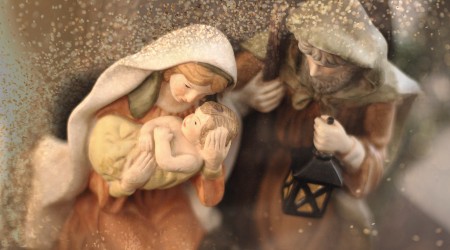 Dear readers, Catholic Online was de-platformed by Shopify for our pro-life beliefs. They shut down our Catholic Online, Catholic Online School, Prayer Candles, and Catholic Online Learning Resources—essential faith tools serving over 1.4 million students and millions of families worldwide. Our founders, now in their 70's, just gave their entire life savings to protect this mission. But fewer than 2% of readers donate. If everyone gave just $5, the cost of a coffee, we could rebuild stronger and keep Catholic education free for all. Stand with us in faith. Thank you. Help Now >
Dear readers, Catholic Online was de-platformed by Shopify for our pro-life beliefs. They shut down our Catholic Online, Catholic Online School, Prayer Candles, and Catholic Online Learning Resources—essential faith tools serving over 1.4 million students and millions of families worldwide. Our founders, now in their 70's, just gave their entire life savings to protect this mission. But fewer than 2% of readers donate. If everyone gave just $5, the cost of a coffee, we could rebuild stronger and keep Catholic education free for all. Stand with us in faith. Thank you. Help Now >
Long, loud iPod use now can become deafness later
FREE Catholic Classes
McClatchy Newspapers (MCT) - They're called the iPod Generation _ all those kids wired to earbuds and MP3 players this holiday season as they hunker down to endure long road trips or relatives that visit even longer. But they're at risk of becoming the "Huh? What?" Generation.
Highlights
McClatchy Newspapers (www.mctdirect.com)
12/19/2008 (1 decade ago)
Published in Health
You've heard of BlackBerry Thumb? Now there's iPod Ear.
With the increasing popularity of MP3 players _ and the loud, long listening habits of today's youth _ millions of children and teens are at a newfound risk of noise-induced hearing loss. Doctors around the country say they are seeing younger and younger patients with hearing loss symptoms that typically don't occur before middle age. Many of them blame constant use of iPods and other players that blare music directly into ears.
Similar concerns were raised with Sony's Walkman in the 1980s, but the difference is that the latest portable stereos hold thousands of songs and have longer-lasting batteries. Because hearing damage is directly related to the duration of exposure _ not just volume _ one fear is that steady, long-term exposure to even moderately loud music could result in premature hearing loss.
"Once these things became portable and full-time usable, we really started noticing more noise-induced hearing loss problems in younger children," said Dr. Robert Fifer, director of Audiology and Speech Pathology at the University of Miami's Mailman Center for Child Development.
"We're seeing the same kind of hearing loss we used to see in older people who worked in factories for years."
Hearing specialists say the cases they're seeing may be only the beginning for this generation because accumulated noise damage can take years before it causes noticeable problems. The research isn't conclusive, but the warning signs are there:
The number of Americans age 3 and older with some form of auditory disorder has more than doubled since 1971, from 13.2 million to about 30 million today, according to the American Speech-Language-Hearing Association. Of those, one-third are said to have noise-induced hearing loss.
The Centers for Disease Control and Prevention reports that 13 percent of American children between 6 and 19 _ more than 5 million young people _ have some form of noise-induced hearing loss.
More than half of American high school students have at least one symptom of hearing loss, according to a 2006 poll by the American Speech-Language-Hearing Association. Hispanic teens, in particular, are at risk because a greater proportion of them play their iPod at loud levels and listen longer (one to four hours), compared with other teens.
In October, the European Union's Scientific Committee on Emerging and Newly Identified Health Risks reported that 5 to 10 percent of personal music player listeners risk permanent hearing loss if they listen for more than one hour per day each week at high volume settings for at least five years.
WHAT'S TOO LOUD?
At peak volume, iPods can hit close to 120 decibels _ a level between a jackhammer and a jet engine. Hearing experts say 85 decibels _ the sound of city traffic _ is safe. An MP3 player's range is usually 60 to 110 decibels. But too many people are going beyond the recommended limits, especially when they're on the street or in crowded places and crank the volume to drown outside noise.
Another alarming trend: Toy manufacturers are marketing MP3 players to children as young as 3. These devices _ Bratz Liptunes, the Disney Mix Stick _ produce sound well above 85 decibels, according to an analysis by the American Speech-Language-Hearing Association, which says this is like "plugging virtual rock concerts" into toddlers' ears.
Hearing specialists say the cases they're seeing now may be only the start of trouble for this generation because accumulated noise damage develops slowly and insidiously. A 15-year-old who regularly cranks the volume on his player for hours at a time may not experience any noticeable problems until he or she is in their mid- to late-20s.
As part of a "Turn It to the Left" campaign, the American Academy of Audiology has produced a rap song that warns kids to turn the volume down on their MP3 players:
"Ahh, It ain't no funny, man, it ain't no fun, when you're 20 years old, but your ears are 81."
Fifer says he's seen early signs of noise-induced hearing loss in his patients between 8 and 16.
"The common denominator is the iPod or other similar device," he said. "They like to listen to it loud, usually so loud that mom can hear it across the room. The general rule of thumb I give them is that they should be able to hear the conversation around them. If not, it's too loud."
A MUFFLED WORLD
Noise-induced hearing loss makes it difficult to understand what is being said in restaurants and other places with background noise. Conversations sound muffled, as if coming through a hotel room wall. It also becomes difficult to hear high-frequency, soft consonants, such as "s," "t," "f," "h" and the "sh" sound.
"In English, those sounds comprise more than one-third of what we speak, so you're talking about misunderstanding key words," Fifer said.
Dennis Burrows, a vice president with the American Speech-Language-Hearing Association, calls noise-induced hearing loss a "quality of life issue."
Sufferers tend to withdraw, their health often deteriorates and they can encounter problems communicating at work.
"Think of the older person with hearing loss; he's the one alone in the corner who is all crabby, but if people lose their hearing at an earlier age, these flaws are going to kick in earlier," Burrows said.
Noise-induced hearing loss happens when loud sounds stress and damage the delicate hair cells in the inner ear that convert mechanical vibrations in the air into electrical signals the brain interprets as sound. If exposed to loud noises for a long time, the hair cells can die, producing hearing loss.
Views differ slightly on what are acceptable levels and durations for listening to a player. One 2006 study by the University of Colorado at Boulder and Children's Hospital in Boston determined that a typical person can safely listen to an iPod for 4.6 hours per days at 70 percent volume. The report found no significant difference in sound levels between genres of music.
Complicating the issue is that not everyone shares the same risk of hearing loss. Some people have tougher ears, while others are more tender and prone to damage. Also, unlike speedometers on cars, most MP3 players don't warn you when danger levels are reached.
Audiologists tell listeners to subscribe to two basic rules of thumb: keep the volume down (a good guide is to set the volume level at half) and limit listening time (to give your hearing a break).
"If you can't hear someone speaking to you and that person is just an arm's length away, then your iPod is too loud," Burrows said. "You don't have to understand every word being said, but you have to know someone is talking."
Many hearing specialists also recommend replacing standard earbuds with more expensive noise-canceling headphones or "canalphones." And Sony, Panasonic, Etymotic Research, Shure and Bose produce sets that aim to block out background noise, so you can hear the music better at lower volumes.
But don't rely on just specialized earphones for safety.
"The problem is that no matter how you put the sound in, loud is loud is loud," said Burrows, 54. "It can be like sticking a chainsaw in your ear. The real key is to watch your volume and limit your time.
"I'm an old Led Zeppelin rocker kind of guy and I crank it up sometimes. But I don't listen to it long. If I'm going to really rock out, I do it for no more than an hour."
___
LISTENING TIPS
_Lower the volume: A good guide is half volume or no more than 60 percent of the maximum sound output. If you can hear sound leaking out of the earbuds or if you can't hear yourself clearly when talking at a typical conversation level, the volume is probably too high.
_Limit listening time: Researchers have suggested anywhere from 30 minutes to no more than 1-˝ hours a day, but the louder the volume, the shorter your duration should be. At maximum volume, you should listen for only about 5 minutes a day.
_Unplug: Take time out and give your ears a break; after rest and recovery, hearing can return to normal levels.
_Upgrade your earbuds: Use "noise canceling" earphones (either the kind that fit outside the ear or those that fit snugly in the ear canal) because they can block out unwanted background sounds and lower the need to crank up the volume.
___
MORE INFO
_Volume limit feature: Apple now has software updates with a volume limit feature for the iPod nano and fifth-generation iPod, www.apple.com/sound. The new iPod and iPod nano include the feature right out of the box.
_Find an audiologist: Look for help in South Florida with online referrals by the American Academy of Audiology (http://webportal.audiology.org/
Custom/FindAnAudiologist.aspx; (800-AAA-2336) or the American Speech-Language-Hearing Association (www.asha.org/proserv; 800-638-8255).
_For musicians: HEAR is a nonprofit that aims to protect the hearing of musicians and music lovers, with info on custom molded earplugs and more, www.hearnet.com.
_For kids: Dangerous Decibels is a virtual exhibit that teaches the dangers of noise-induced hearing loss, www.dangerousdecibels.org/virtualexhibit.cfm.
___
© 2008, The Miami Herald.
Join the Movement
When you sign up below, you don't just join an email list - you're joining an entire movement for Free world class Catholic education.

-

-
Mysteries of the Rosary
-
St. Faustina Kowalska
-
Litany of the Blessed Virgin Mary
-
Saint of the Day for Wednesday, Oct 4th, 2023
-
Popular Saints
-
St. Francis of Assisi
-
Bible
-
Female / Women Saints
-
7 Morning Prayers you need to get your day started with God
-
Litany of the Blessed Virgin Mary
Daily Catholic
 Daily Readings for Friday, December 27, 2024
Daily Readings for Friday, December 27, 2024 St. John the Apostle: Saint of the Day for Friday, December 27, 2024
St. John the Apostle: Saint of the Day for Friday, December 27, 2024 Glory be to the Father: Prayer of the Day for Friday, December 27, 2024
Glory be to the Father: Prayer of the Day for Friday, December 27, 2024- Daily Readings for Thursday, December 26, 2024
- St. Stephen: Saint of the Day for Thursday, December 26, 2024
- Rosary Prayers: Prayer of the Day for Thursday, December 26, 2024
![]()
Copyright 2024 Catholic Online. All materials contained on this site, whether written, audible or visual are the exclusive property of Catholic Online and are protected under U.S. and International copyright laws, © Copyright 2024 Catholic Online. Any unauthorized use, without prior written consent of Catholic Online is strictly forbidden and prohibited.
Catholic Online is a Project of Your Catholic Voice Foundation, a Not-for-Profit Corporation. Your Catholic Voice Foundation has been granted a recognition of tax exemption under Section 501(c)(3) of the Internal Revenue Code. Federal Tax Identification Number: 81-0596847. Your gift is tax-deductible as allowed by law.








 Daily Readings for Friday, December 27, 2024
Daily Readings for Friday, December 27, 2024 St. John the Apostle: Saint of the Day for Friday, December 27, 2024
St. John the Apostle: Saint of the Day for Friday, December 27, 2024 Glory be to the Father: Prayer of the Day for Friday, December 27, 2024
Glory be to the Father: Prayer of the Day for Friday, December 27, 2024

